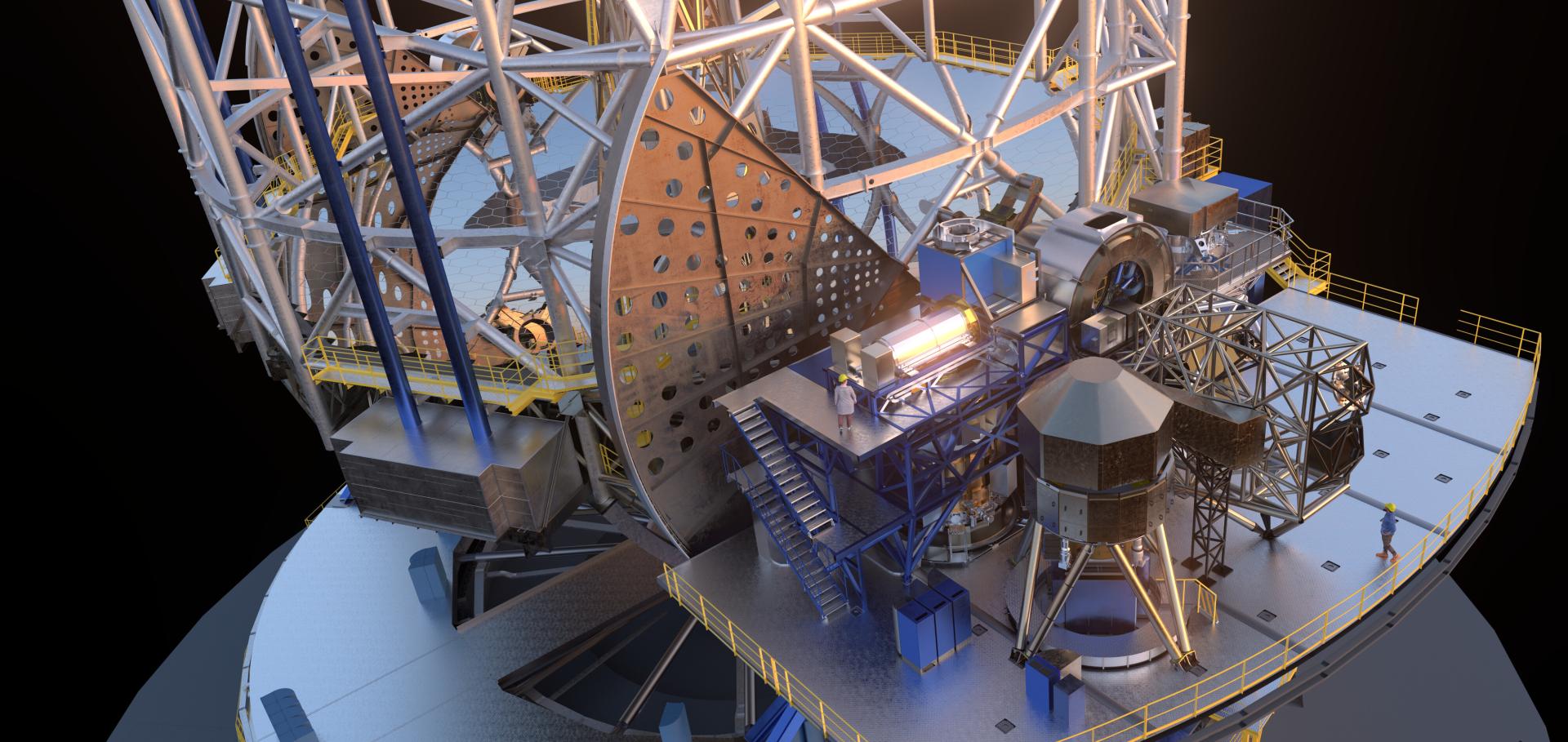The opto-mechanical design of HARMONI: A first light integral field spectrograph for the E-ELT
Proceedings of SPIE - The International Society for Optical Engineering 8446 (2012)
Abstract:
HARMONI is a visible and near-IR integral field spectrograph, providing the E-ELT's spectroscopic capability at first light. It obtains simultaneous spectra of 32000 spaxels, at a range of resolving powers from R∼4000 to R∼20000, covering the wavelength range from 0.47 to 2.45 ìm. The 256 ? 128 spaxel field of view has four different plate scales, with the coarsest scale (40 mas) providing a 5? ? 10? FoV, while the finest scale is a factor of 10 finer (4mas). We describe the opto-mechanical design of HARMONI, prior to the start of preliminary design, including the main subsystems - namely the image de-rotator, the scale-changing optics, the splitting and slicing optics, and the spectrographs. We also present the secondary guiding system, the pupil imaging optics, the field and pupil stops, the natural guide star wavefront sensor, and the calibration unit. © 2012 SPIE.An oxford swift integral field spectroscopy study of 14 early-type galaxies in the coma cluster
Monthly Notices of the Royal Astronomical Society 425:2 (2012) 1521-1526
Abstract:
As a demonstration of the capabilities of the new Oxford SWIFT integral field spectrograph, we present first observations for a set of 14 early-type galaxies in the core of the Coma cluster. Our data consist of I- and z-band spatially resolved spectroscopy obtained with the Oxford SWIFT spectrograph, combined with r-band photometry from the Sloan Digital Sky Survey archive for 14 early-type galaxies. We derive spatially resolved kinematics for all objects from observations of the calcium triplet absorption features at ∼8500Å. Using this kinematic information we classify galaxies as either fast rotators or slow rotators. We compare the fraction of fast and slow rotators in our sample, representing the densest environment in the nearby Universe, to results from the ATLAS3D survey, finding that the slow rotator fraction is ∼50per cent larger in the core of the Coma cluster than in the volume-limited ATLAS3D sample, a 1.2σ increase given our selection criteria. Comparing our sample to the Virgo cluster core only (which is 24 times less dense than the Coma core) we find no evidence of an increase in the slow rotator fraction. Combining measurements of the effective velocity dispersion σe with the photometric data we determine the Fundamental Plane for our sample of galaxies. We find that the use of the average velocity dispersion within 1 effective radius, σe, reduces the residuals by 13per cent with respect to comparable studies using central velocity dispersions, consistent with other recent integral field Fundamental Plane determinations. © 2012 The Authors Monthly Notices of the Royal Astronomical Society © 2012 RAS.Direct Detection of Nearby Habitable Zone Planets Using Slicer Based Integral Field Spectrographs and EPICS on the E-ELT
Proceedings of the International Astronomical Union Cambridge University Press (CUP) 8:S293 (2012) 442-444
NIR spectroscopy of star-forming galaxies at z ∼ 1.4 with Subaru/FMOS: The mass-metallicity relation
Publications of the Astronomical Society of Japan 64:3 (2012) 601-6019
Abstract:
We present near-infrared spectroscopic observations of star-forming galaxies at z ∼ 1.4 with FMOS on the Subaru Telescope. We observed K-band selected galaxies in the SXDS/UDS fields with K ≤ 23.9mag, 1.2 ≤ zph ≤ 1.6,M ≥ 109.5M, and expected F(Hα) ≥ 10-16 erg s-1cm-2; 71 objects in the sample have significant detections of H?. For these objects, excluding possible AGNs, identified from the BPT diagram, gas-phase metallicities were obtained from the [N II] /Hα line ratio. The sample is split into three stellar-mass bins, and the spectra are stacked in each stellar-mass bin. The mass-metallicity relation obtained at z ∼ 1.4 is located between those at z ∼ 0.8 and z ∼ 2.2. We constrain the intrinsic scatter to be ∼0.1 dex, or larger in the mass-metallicity relation at z ∼ 1.4; the scatter may be larger at higher redshifts. We found trends that the deviation from the mass-metallicity relation depends on the SFR (Star-formation rate) and the half light radius: Galaxies with higher SFR and larger half light radii show lower metallicities at a given stellar mass. One possible scenario for the trends is the infall of pristine gas accreted from IGM, or through merger events. Our data points show larger scatter than the fundamental metallicity relation (FMR) at z ∼ 0.1, and the averagemetallicities slightly deviate fromthe FMR. The compilation of themass- metallicity relations at z ∼ 3 to z ∼ 0.1 shows that they evolve smoothly from z ∼ 3 to z ∼ 0 without changing the shape so much, except for the massive part at z ∼ 0. © 2012 Astronomical Society of Japan.An Oxford SWIFT Integral Field Spectroscopy study of 14 early-type galaxies in the Coma cluster
(2012)


